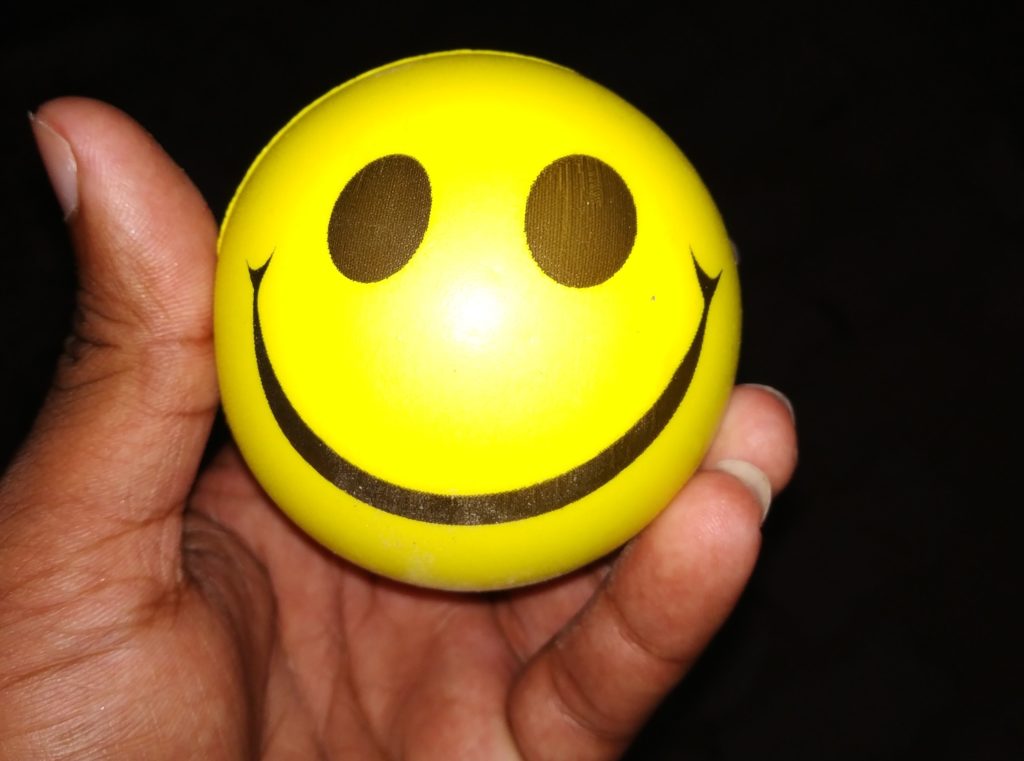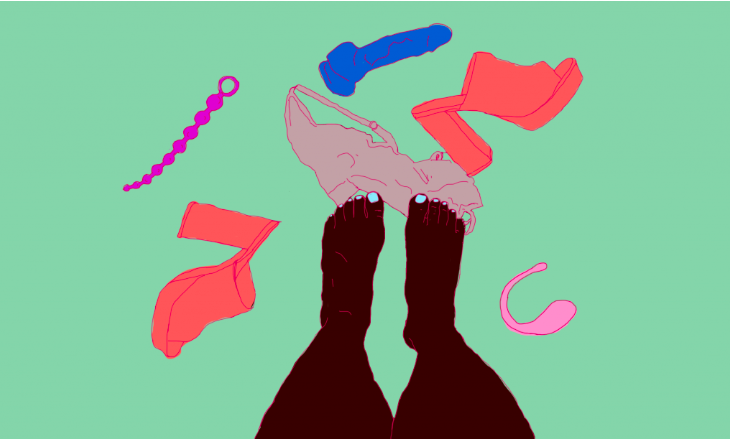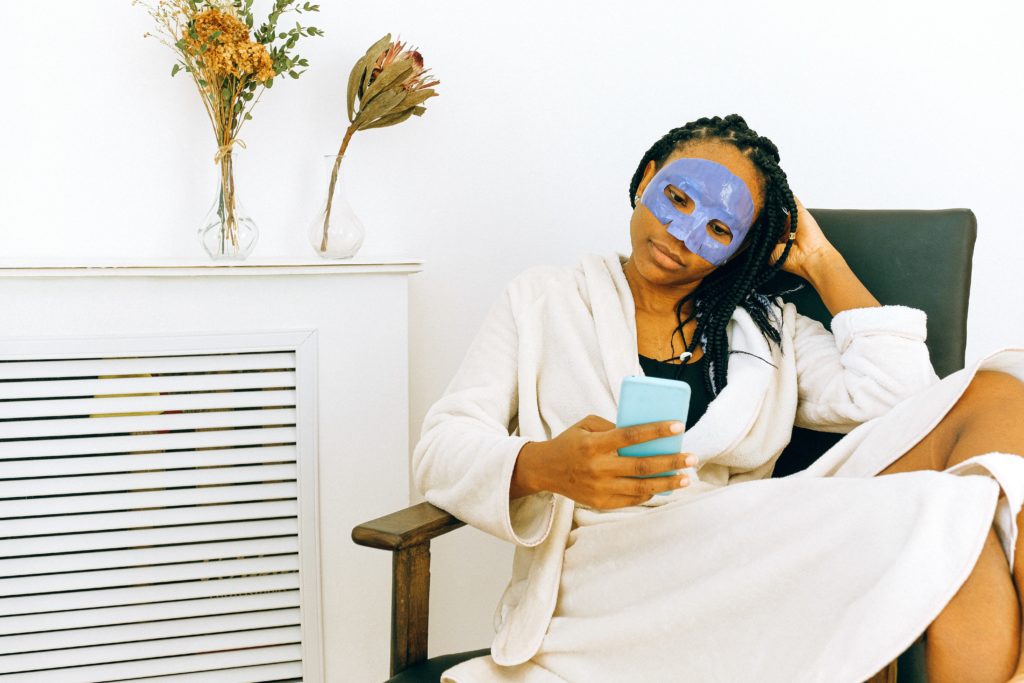
I find it difficult not to touch my face. The crushing weight of living under white supremacist capitalist heteropatriarchy compels me to continuously clutch my cheeks: imagine a modern-day reboot of Edvard Munch’s The Scream painting, but with more existential anxiety. That’s me. The thing is, I know this is a bad habit. From the level of hysteria in the skincare community, it’s clear that touching your face is akin to using the fabric of a tube seat as a face wipe (biodegradable, obv), dragging dirt, oil, and bacteria across your facial real estate and clogging your pores.
More importantly, though, in this time of public health crisis we’ve been told to avoid touching our faces to prevent the spread of Covid-19, something my skin pH might also thank me for. The NHS advises against touching your eyes, nose or mouth, as the virus is caught from, and spread by droplets produced when an infected person coughs or sneezes. Short of wearing a human-sized pet cone, or really leaning into the Little Women aesthetic and donning goat-skin gloves around the clock, it’s hard to know how to curb my face-touching enthusiasm.
They say the devil makes work for idle hands, so keeping busy feels like the best route to success. Given the new frustrations we’re all dealing with – from being on hold for five hours to Universal Credit, to pixelated video chats with loved ones – diverting our hands from our faces and busying them with something calming is needed now more than ever. I’m confident that we can get through it all with a little creativity. In aid of the struggle, I’ve listed below five relaxing things to touch, or get in touch with, that aren’t your face.
1. Stroke a pet (or a textured, furry or sequined cushion)

Photography by Tranmautritam
I won’t pretend to understand the intricate details of why stroking a cat feels so good, but the internet tells me that physical touch releases the “cuddle hormone” oxytocin, which basically tells the stress hormone cortisol to sit down and face front. This can help to lower your heart rate, improve your immune function and combat sleeplessness – which is particularly helpful if, like me, you are really not vibing the wall-to-wall high-octane news coverage of the current apocalypse.
If you don’t have a strokable pet and you can’t fork out $5K for Paro the fluffy robotic seal (which was designed for people living with dementia and alleviates anxiety and agitation), a textured cushion will do the job. If you’re UK-based, Matalan does a decent two-tone sequin cushion which I can personally confirm has long-lasting positive effects. Asda also has a faux-fur cow print cushion for anyone quarantined away from the farm and missing the herd.
2. Massage your tired limbs

Photography by Andrea Piacquadio
A lifetime of Google searching cures for chronic headaches has taught me firstly that I’m doomed, and secondly that we all carry stress in different places in our bodies. Apparently, it’s common to hold tension in your shoulders and neck, particularly if you work on a laptop all day. Many people also carry stress in their hands, feet, hips and other joints. Some practitioners think that trauma and stress show up in specific physiological ways – which require particular attention for people living at the intersection of oppressions such as racism, sexism, ableism, classism, transphobia and homophobia.
Of course, in the era of coronavirus, visiting a salon or studio or having a home visit isn’t possible. However, there are easy ways to self-massage, or to give and receive massages with your lockdown buddies if you feel comfortable to do so!
You (or a generous and gentle volunteer) can use hands to perform massages, taking cues from the many “how-to” videos on YouTube – such as Sushmita’s calming 10-minute Ayurvedic pressure point head massage or Lygia Salazar’s soothing partner hand massage (my sister’s review: “woah, it feels like I’m at a nail salon!”). You can also improvise massage tools using items you might already have at home such as a rolling pin, a lacrosse ball if you live in an Enid Blyton story, or a tennis ball. Kai Simon’s 4-part series also gives an overview of the anatomical nuts and bolts of these movements.
Please note that it is generally advised to consult with your doctor or health care specialist before receiving massages.
3. Clench a DIY stress/sensory ball

Photogtaphy by Rahul Yadav
As someone newly living in close quarters with family, I’m experiencing first hand the different emotions that can arise during this challenging time! If you’re used to having a lot of alone time and now find yourself constantly in group settings, or if you’re someone who is energised by socialising and now has to spend a lot of time alone or with one person, it’s understandable to experience a gamut of emotions*. Squeezing a stress ball can help release pent-up feelings like anger, frustration, nervousness and restlessness.
There are lots of ways to make your own stress ball – they mainly involve filling a balloon with rice, baking soda, flour, dried beans, table salt, or orbeez (yeah I had no idea either) and securely tying off the end. To elevate your homemade stress ball to the next level, why not add a drop of aromatherapy oil to soothe your frayed nerves, or decorate it to look like your hated Tory MP of choice and then squeeze the living crap out of it? It might be hard to locate balloons with that distinctive grey pallor, and to recreate the cabinet’s dead-eyed expression as they stare down the barrel of a nose-diving economy, but a little imagination can go a long way. Take care not to leave your creations lying around if you’re in lockdown with small children or animals!
4. Touch yourself

Illustration by Mariel No
An obvious one, but a cost-free classic. As psychotherapist and sex aunty Esther Perel says: sex isn’t something you do, it’s a place that you go inside yourself. In her podcast series Where Should We Begin (which actually has a new episode on being in a couple during lockdown), Esther shares her view that masturbation is about much more than just genitals. It’s about discovering and enjoying sensual touch and self-connection, which can involve simply stroking yourself in any way that feels good (see above for self-massage!). According to Planned Parenthood, one of the benefits of rubbing one (or some) out is that hormones are released which can make you feel happy and de-stressed.
Particularly for LGBTQI+ folk and people who experience gender dysphoria, the mainstream perception that masturbation is about replicating heteronormative ideas of sex and pleasure can be alienating and uncomfortable. More than ever, during these challenging times we can turn to the (modest) wealth of resources and services available for getting down with touching yourself up in a way that feels good – from the Transgender Teen Survival Guide, to Oh Joy Sex Toy (a sex education and sex toy reviewing web comic), and Bustle’s 28 Little Ways to Masturbate Better Tonight.
5. Slip on a face mask

Photography by Anna Shvets
There’s actually one scenario in which I’m great at not touching my face: when I’m wearing a sheet mask. Sheet masks are one of the cornerstones of the Korean skincare industry; they serve the double purpose of moisturising your skin and briefly enabling you to look like a serial killer who is wearing the facial skin of their last victim. Korean brand Innisfree has a range of sheet masks that are 100% biodegradable; a rare eco-friendly option. Or you could just make your own! If you don’t have the time to dig around the internet to find a product that won’t contribute to the planet becoming a burning trash fire, LUSH also has a great range of masks that come in a pot, and natural skincare company Suneeta cosmetics produces powdered masks (I recommend the hydrating pink clay mask).
We’re living in difficult times, and readjusting to a new way of organising your day can take its toll. For me, finding small and free/low-cost ways to create moments of stillness and mindfulness has been really helpful. That Audre Lorde quote about self-care being a radical act of warfare gets thrown around a lot, but at heart I understand it to mean rejecting the types of individualism we’ve seen playing out as people with lots of resources scramble to stockpile toilet paper with which to dry their tears when their share portfolios plummet.
Meanwhile, elsewhere people are losing their jobs and being pushed into poverty, thanks to a Conservative government that has always prioritised profits over people. Taking care of myself is tightly bound up in caring for my community; reconnecting with my mind and body helps me to practice gratitude and energises me to practice solidarity. whether that’s through engaging in local mutual aid groups or trouble-shooting how to get groceries to my 91-year old grandad who lives 200 miles away. It’s time to stop touching our faces and the faces of those around us, but this opens up a space for new ways of connecting with ourselves and our communities. Hands-down, that sounds worth being grateful for.








